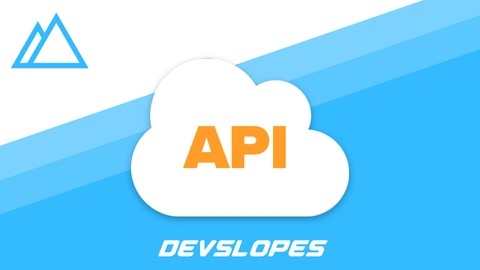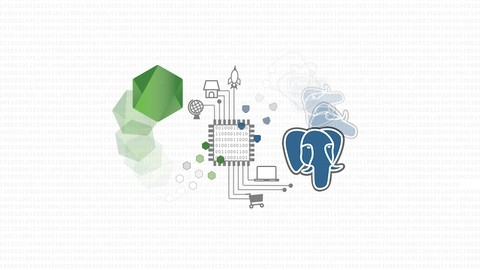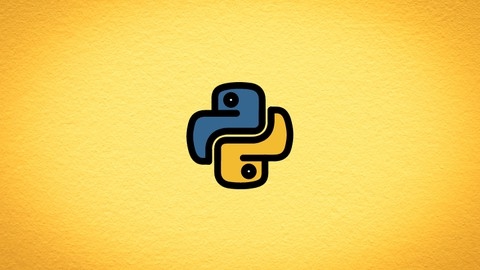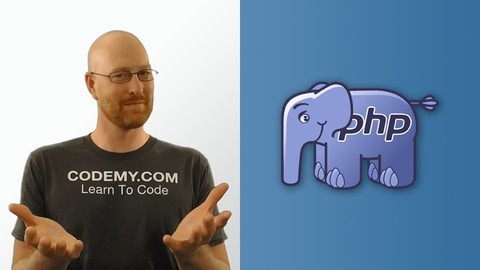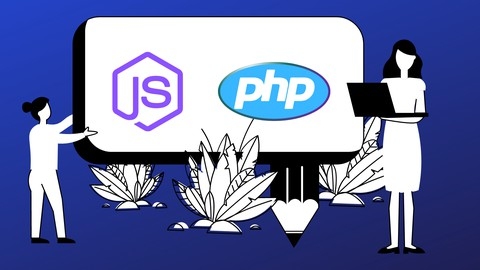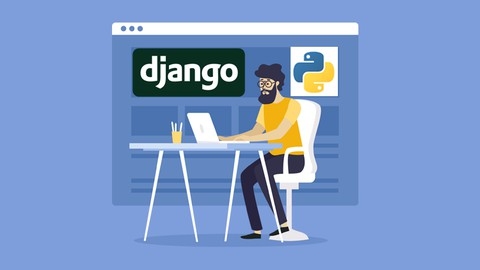NestJS Zero to Hero - Modern TypeScript Back-end Development
You’ll start by setting up the development environment, installing prerequisites like Node.js, Yarn, and the NestJS CLI.
The course guides you through creating a Task Management REST API from scratch, introducing core NestJS concepts like modules, controllers, providers, and services along the way.
As you build the API, you’ll learn how to implement CRUD operations, data validation with pipes, error handling, and advanced features like searching and filtering.
The course dives deep into data persistence using PostgreSQL and TypeORM, ensuring you understand database integration and the Active Record vs. Data Mapper patterns.
Authentication and authorization are crucial aspects covered through JSON Web Tokens (JWT) and Passport.js.
You’ll implement user sign-up, sign-in, password hashing, and secure user-based access restrictions for the Task Management API.
The syllabus also includes bonus sections on logging for observability, configuration management with environment variables, deploying to Heroku and GitHub Pages, and unit testing with Jest.
Additionally, you’ll build a School Management system using GraphQL and MongoDB, exposing you to different architectural patterns.
Throughout the course, you’ll work with modern tools like Docker, pgAdmin, Postman, and VSCode extensions, ensuring a practical and industry-relevant learning experience.
Build a Backend REST API with Python & Django - Advanced
The course follows a test-driven development (TDD) approach, ensuring your code is thoroughly tested and maintainable.
You’ll start by setting up your development environment, including installing necessary tools like Python, Django, and Docker.
The course will walk you through creating a new Django project, configuring Docker Compose for containerization, and setting up continuous integration/continuous deployment (CI/CD) with GitHub Actions.
The course emphasizes the importance of test-driven development (TDD) and teaches you how to write effective unit tests using Django’s testing framework.
You’ll learn about mocking, testing web requests, and common testing pitfalls.
One of the first tasks is to create a custom user model for your Django project.
You’ll learn how to normalize email addresses, require email input, and add support for creating superusers through the command-line interface (CLI).
Next, you’ll configure the Django admin to work seamlessly with your custom user model.
This includes listing, modifying, and creating users through the admin interface.
Proper documentation is crucial for any API, and this course covers auto-generating API documentation using Django REST Framework’s drf-spectacular package.
You’ll learn how to set up Swagger UI for interactive documentation.
With the foundations in place, you’ll dive into building a user API.
This includes creating user endpoints for registration, authentication (using JSON Web Tokens), and managing user profiles.
The core of the course revolves around building a comprehensive recipe API.
You’ll learn how to create, list, retrieve, update, and delete recipes.
Additionally, you’ll implement features like uploading recipe images, managing tags, and handling ingredients.
To enhance the API’s functionality, you’ll implement filtering and searching capabilities.
This will allow users to filter recipes based on tags, ingredients, or other criteria, making it easier to find specific recipes.
Finally, the course covers deploying your Django REST API to Amazon Web Services (AWS) using Docker.
You’ll learn how to create an AWS account, set up a virtual server (EC2 instance), configure the necessary services, and deploy your application using Docker Compose.
Throughout the course, you’ll gain hands-on experience with various Django concepts, such as models, views, serializers, and viewsets.
The course also covers advanced topics like nested serializers, handling static files with Django and Docker, and refactoring for better code organization.
By the end of this course, you’ll have a solid understanding of building robust and scalable REST APIs with Python, Django, and the Django REST Framework.
You’ll be equipped with the skills to develop and deploy your own APIs, following industry best practices and adhering to test-driven development principles.
Backend Master Class [Golang + Postgres + Kubernetes + gRPC]
You’ll start by learning how to design a PostgreSQL database schema and generate SQL code using dbdiagram.io.
The course guides you through setting up a development environment on Windows (with WSL2) or MacOS, complete with Go, Visual Studio Code, Docker, and other essential tools.
Next, you’ll dive into working with databases in Golang.
You’ll learn to write database migrations, generate CRUD code from SQL using sqlc, write unit tests with random data, implement transactions, handle deadlocks, and understand transaction isolation levels.
The course even covers setting up GitHub Actions for automated testing.
Moving on, you’ll build a RESTful HTTP JSON API using Gin, implementing features like config loading, mocking for testing, custom validators, authentication with PASETO (a more secure alternative to JWT), and authorization middleware.
The deployment section is equally comprehensive, covering Docker image optimization, docker-compose for local development, pushing images to AWS ECR using GitHub Actions, setting up an AWS RDS database, and storing secrets with AWS Secrets Manager.
You’ll learn to create an EKS cluster on AWS, deploy your application using Kubernetes, configure Ingress for traffic routing, automate TLS certificate management with cert-manager, and enable automatic deployments via GitHub Actions.
The course doesn’t stop there!
It dives into advanced topics like managing user sessions with refresh tokens, generating database documentation from DBML, and an in-depth exploration of gRPC.
You’ll learn to define gRPC APIs with Protocol Buffers, implement gRPC services in Go, serve both gRPC and HTTP requests via gRPC Gateway, extract metadata, generate Swagger documentation, embed static files, validate parameters, run database migrations from code, handle partial updates, add authorization, and write structured logs.
Finally, you’ll learn about asynchronous processing with background workers using Asynq and Redis.
This includes integrating workers with your Go web server, sending tasks within transactions, handling errors and logs, implementing email verification, and unit testing gRPC APIs with mocks.
The course wraps up by improving server stability and security, covering topics like upgrading sqlc syntax, switching to the pgx database driver, handling pgx errors, configuring Docker Compose, installing binary packages, implementing role-based access control (RBAC), granting AWS permissions, graceful shutdown, and more.
Beginner API development in Node, Express, ES6, & MongoDB
You’ll start by setting up your development environment, installing essential tools like Node.js, MongoDB, Postman, and code editors.
This hands-on approach ensures you have everything you need to dive into API development right away.
The course begins with an introduction to JavaScript and ES6, the latest version of the language.
You’ll learn about variables, strings, operators, conditionals, loops, functions, objects, and arrays – the building blocks of any JavaScript application.
Understanding these fundamentals is crucial for writing clean, maintainable code.
Once you have a solid grasp of JavaScript, you’ll jump into creating your first REST API using Node.js and Express.
Step-by-step, you’ll learn how to set up a project skeleton, connect to a MongoDB database, and implement CRUD operations (Create, Read, Update, Delete) using HTTP requests like POST, GET, PUT, and DELETE.
Along the way, you’ll refactor and enhance your API, adding features like nested data models and references to avoid data duplication.
But an API is only as good as its security measures.
That’s why the course dedicates a section to authentication and authorization.
You’ll learn how to set up a user model, implement authentication middleware using Passport.js, and secure your API endpoints with JSON Web Tokens (JWT).
Once your API is complete, you’ll learn how to deploy it to a live server using Digital Ocean.
This includes setting up a droplet, configuring Nginx as a reverse proxy, and obtaining a free SSL certificate for secure HTTPS connections.
To solidify your learning, the course guides you through building iOS and Android client applications that interact with your API.
You’ll create data models, services for API communication, user interfaces, and implement features like user registration, login, adding and retrieving data, and more.
Throughout the course, you’ll work on practical exercises and quizzes to reinforce your understanding of the concepts covered.
By the end, you’ll have a solid foundation in API development with Node.js, Express, and MongoDB, as well as the skills to build client applications that consume your APIs.
Node, SQL, & PostgreSQL - Mastering Backend Web Development
You’ll begin by diving into Node.js, a powerful JavaScript runtime that allows you to build server-side applications.
The course covers NPM (Node Package Manager) for managing dependencies, creating your first HTTP server, and leveraging ES6 features.
You’ll also explore advanced concepts like the event loop and JSON handling.
Next, you’ll learn Express, a popular web application framework for Node.js.
By building a Fortunes API, you’ll gain hands-on experience with routing, handling HTTP methods (GET, POST, PUT, DELETE), and integrating with tools like Postman.
If you’re on Windows, the course guides you through setting up the Windows Subsystem for Linux and Visual Studio Code.
The course then shifts gears to SQL and databases, introducing you to the relational model and PostgreSQL, a robust open-source database management system.
You’ll learn to create tables, insert data, write SQL scripts, perform selections, join tables, and execute advanced queries.
Bringing it all together, you’ll build a Monsters API that integrates Node.js with PostgreSQL.
You’ll configure the Postgres connection pool, implement CRUD operations (Create, Read, Update, Delete) with Express routes, handle errors with middleware, and explore advanced querying techniques for related data.
Throughout the journey, you’ll have access to an accompanying repository, making it easy to follow along and reinforce your learning.
By the end, you’ll have a solid foundation in backend web development, armed with the skills to build robust APIs and integrate them with databases like PostgreSQL.
Python on the Backend
The course starts by introducing you to Python, its interpreter, and the differences between compiled and interpreted languages.
You’ll also learn about the Global Interpreter Lock, which is crucial in multi-threaded environments.
Next, you’ll set up your development environment by installing Python3, Tornado (the Python HTTP web server), and Visual Studio Code on either Mac or Windows.
This hands-on approach ensures you’re ready to start coding right away.
Once the setup is complete, you’ll dive into building a Python HTTP web server.
You’ll learn about the HTTP protocol, create simple GET endpoints, and serve HTML files from your server.
This lays the foundation for understanding how web servers work.
The course then moves on to handling input parameters in Python APIs.
You’ll learn the difference between query and resource parameters, and how to build GET endpoints that accept these parameters.
This is a crucial skill for building robust APIs.
In the next section, you’ll build dynamic POST and GET JSON HTTP APIs.
You’ll create endpoints that can read data from and write data to text files on the backend.
This simulates real-world scenarios where APIs interact with data sources.
You’ll also learn how to consume your Python API from JavaScript.
This cross-language integration is essential for building modern web applications.
The course even covers building an image upload service with Python.
You’ll create a client-side HTML interface and a server-side Python component that accepts and saves uploaded files.
If you’re interested in data analysis and machine learning, you’ll love the section on Jupyter Notebooks.
You’ll learn what Jupyter Notebooks are, how to install and configure them on Mac, Windows, and Docker, and even work through a Twitter example.
In the bonus section, you’ll explore advanced topics like load balancing Python services with Nginx, spinning up a Postgres instance with Docker, database programming with Python (including PostgreSQL and MySQL), server-side vs client-side cursors, stateless vs stateful web applications, and the Django architecture.
Intro To PHP For Web Development
The syllabus covers all the essential topics you need to get started with PHP and build dynamic websites.
You’ll begin by setting up your development environment, installing tools like XAMPP for running PHP locally and Sublime Text as your code editor.
The course then dives into the fundamentals of PHP syntax, variables, operators, and control structures like if-else statements and loops.
As you progress, you’ll learn how to work with arrays (both numeric and associative) and functions, including built-in ones like random() and date().
The syllabus also covers string manipulation and the include function for templating websites.
One of the highlights is learning how to template out an entire website using PHP.
You’ll even get to practice creating a Jumbotron component.
This hands-on approach ensures you gain practical experience in building real-world applications.
But that’s not all – the course also teaches you version control with Git and how to host your PHP applications on Heroku’s cloud platform.
You’ll learn to initialize a Git repository, generate an SSH key, and push your code to Heroku for live deployment.
The syllabus includes a dedicated section on getting fast support through the instructor’s Facebook group, where you can interact with other students and get your questions answered promptly.
JavaScript And PHP Programming Complete Course
The syllabus covers a comprehensive range of topics, starting with an introduction to JavaScript and delving into arrays, variables, conditional statements, loops, operators, functions, events, error handling, cookies, animation, objects, and page redirection.
The course then transitions seamlessly into PHP, covering the basics like syntax, web concepts, input/output, arithmetic operations, comparison operators, assignment operators, conditional operators, function statements, break and continue statements, decision-making, while and for loops, and MySQL API integration.
You’ll also explore advanced PHP concepts such as MySQLi API, inheritance, classes and objects, anonymous classes, cookies, file input/output, error handling, exception handling, GET and POST methods, CSPRNG (cryptographically secure pseudorandom number generator), scalar type declaration, null coalescing operator, spaceship operator, polymorphism, and sessions.
Complete Backend Development 2024 Bundle - Python Roadmap
The journey begins with an introduction to Python, guiding you through the installation process and helping you set up your development environment.
You’ll learn the fundamentals of Python programming, including variables, data types, operators, input/output statements, and control structures like conditionals and loops.
As you progress, you’ll dive into more advanced topics such as strings, lists, tuples, dictionaries, and functions.
The course also provides a solid foundation in Object-Oriented Programming (OOP) concepts, teaching you about classes, objects, inheritance, encapsulation, and more.
One of the standout features of this course is its focus on practical projects.
You’ll learn how to build a face detection application using OpenCV, a popular computer vision library.
Additionally, you’ll gain hands-on experience with Django, a high-level Python web framework, by developing a task management application from scratch.
It also covers crucial aspects of web development, such as templates, models, migrations, forms, authentication, and deployment.
You’ll learn how to secure your application, integrate a PostgreSQL database, and deploy your project to a live server using services like Railway App.
But what sets this course apart is its comprehensive coverage of Git and GitHub.
You’ll learn version control concepts, Git commands, branching strategies, merge conflicts, rebasing, and even open-source contribution workflows.
This knowledge is invaluable for collaborating with other developers and maintaining a clean, organized codebase.
Throughout the course, you’ll have access to resources and AI assistance tools like ChatGPT and Bard, which can help you overcome challenges and deepen your understanding of the concepts.
Django 3 - Python Backend Web Development For Beginner
The course starts with an introduction to Django, guiding you through the installation and setup process.
You’ll learn how to create and structure Django projects, understanding the framework’s architecture and workflow.
From there, you’ll dive into the core concepts of Django, including views, URLs, templates, and models.
One of the standout features of this course is its hands-on approach.
You’ll build a dynamic website from scratch, mastering techniques like rendering data, working with templates, and integrating Bootstrap for sleek designs.
The syllabus also covers crucial topics like user authentication, form handling, and database integration with MySQL.
As you progress, you’ll explore advanced concepts like class-based views, which streamline the development process.
The course then takes you through building real-world projects, such as a blog application, a social media platform, and an eCommerce website.
These projects will give you practical experience in implementing features like user registration, profile management, content creation, and even payment gateways.
The instructor’s clear explanations and step-by-step guidance will help you grasp these concepts effectively.
One notable aspect of the syllabus is its emphasis on user authentication and security.
You’ll learn how to implement robust user registration, login, and password reset functionalities, ensuring your applications are secure and user-friendly.
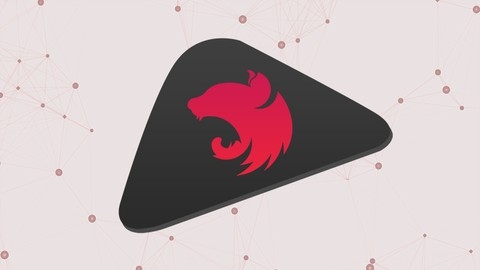

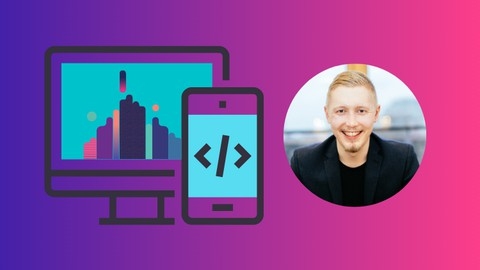
![Backend Master Class [Golang + Postgres + Kubernetes + gRPC]](/img/best-backend-development-courses-udemy/3959106_BackendMasterClassGolangPostgresKubernetesgRPC.jpg)
